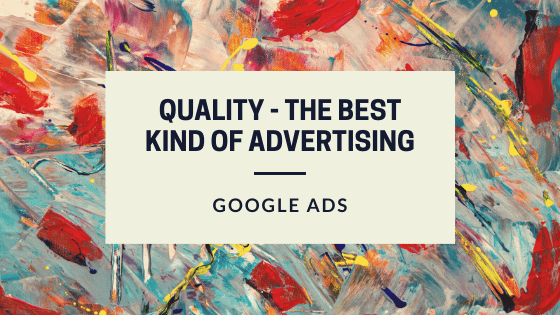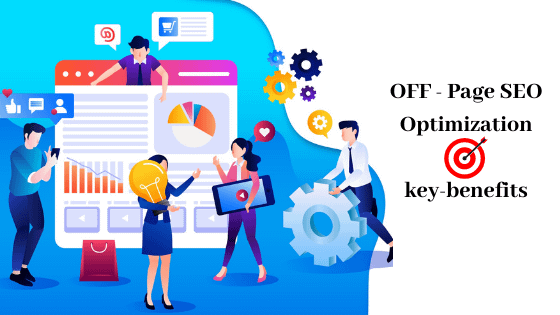Hi guys, we have come up with the most interesting & trending topic in the Digital Marketing world which is Google Ads. Google Ads...
Part 1: A Complete Walkthrough Insider Tale of a Perfectly Optimized On-page SEO
Part 1: A Complete Walkthrough Insider Tale of a Perfectly Optimized On-page SEO
Hey guys! It’s definitely been awhile we’ll attempt to stay more focused & as said from our previous blog post we’ve covered the Optimization of an On-Page SEO.
On-page SEO refers to factors on your own website that you can optimize such as the code and the content, it has a big impact on your page’s ability to rank if optimized properly.
Checklist for On-page SEO:
* Keyword research
*User-Friendly URL Strings
*Page Title
*Header Tags
*Meta Description
*Keyword targeted Authoritative Content
*Image Optimization
*Internal Links
*Site Speed
* Mobile Responsiveness

ON-PAGE SEO Optimization
Keyword Research:
Keyword research is so important for an SEO to get relevant & organic search traffic. Keyword integration is just the beginning, the targeted SEO keywords should be used to inspire all page content for searcher intent. Impact of SEO keyword task is to perform including finding topics, on-page SEO, outreach, promotion. Keyword research helps in site traffic growth. The utmost importance in keyword research is to have great URLs, titles and descriptions, as these are the things that make a search engine result snippet. The keywords added should appear in the first 100 words of an article. Create a piece of content optimized around that same keyword. Optimize content around synonyms & related keywords. By adding Keywords in Page title, URL’s, Description & Content page would crawl faster and rank higher.
Tools: Google keyword planner, Google Search Console, Ubersuggest, Ahref, Moz & many more.
User-Friendly URL Strings:
* URL optimization is one of the best practices for SEO where the website should be user-friendly.
A user-friendly URL tells about the pages using keywords that are easy to read for both search engine spiders and users.
URL’s best SEO practices are Domain name, HTTPS URLs, Keywords in URL, URL length, Lower case upper case & space in URL, Use 301 Redirects for any URL change, 301 Redirects using the .htaccess file.
HTTPS is the new standard, so if your site isn’t secured yet, It’s been highly recommended to switch over. Google has said that HTTPS-secured sites have a ranking advantage. Subfolders are MUCH more SEO-friendly than subdomains. When necessary for readability, use hyphens to separate words. URLs should not use underscores, spaces, or any other characters to separate words.
Use of lowercase letters. In some cases, uppercase letters can cause issues with duplicate pages. For example, plexcel.com/Blog and plexcel.com/blog might be seen as two distinct URLs, which might create issues with duplicate content.
Generic Example:
https://example.com/topic
* Make proper use of ‘Canonical’ tags:
A canonical tag is a piece of code added to your website where you can tell Google which one is your preferred version.
For Example:
- Mark all duplicate pages with a rel=”canonical” link element. Add a <link> element with the attribute rel=”canonical” to the <head> section of duplicate pages, pointing to the canonical page, like this one:
<link rel=”canonical” href=”https://example.com/” /> - If the canonical page has a mobile variant, add a rel=”alternate” link to it, pointing to the mobile version of the page:
<link rel=”alternate” media=”only screen and (max-width: 640px)” href=”http://m.example.com/”>
Page Title:
The meta title is the most important factor which tells the search engine what your page is all about. The length of the title tag should be under 60 characters. Give your page title a unique name. Write to your customer. Make use of your brand. Put important keywords first.
Code Example:
<head>
<title>Example of the Title</title>
</head>
Title tags are used in three key places:
* search engine results pages (SERPs)
* web browsers
* social networks.
Header Tags:
Each page/post should have multiple header tags. H1 tag is formatted differently than the rest of the page tags. The main title of your document will be your <h1>, your main points the <h2> and sub-points the <h3>. The <H1> tag is shown to users while browsing a page. Use headings in a hierarchical manner. Proper usage of the H1 tag has been emphasized. Italic and bold tags can be used to highlight the most important parts of the content and to add a semantic emphasis on certain words. The h1 is an HTML tag that indicates a heading on a website. Should use only one H1 tag.
‘H1s have always been a major ranking factor’
Meta Description:
A meta description is the most important ranking factor in SEO which attracts clicks to your snippet and traffic to your website. It is best to keep meta descriptions between 50–160 characters that they’re sufficiently descriptive which results in highly influence user click-through rates. Meta descriptions need to be targeting searched keywords. Otherwise, Google generates descriptions form site content. The goal of the meta description is to get the visitor to click through to your site. The meta descriptions can drive clicks, traffic, potential conversions, and revenue by; Increasing a site’s CTR in the SERPs, Traffic, Potential conversions. Keywords Your Audience is searching for should appear in the meta description.
Code Example:
<head>
<meta name=”description” content=”This is an example of a meta description. This will often show up in search results.”>
</head>
Meta Description length:
For Desktop:
Google: 158 characters / 920 pixels.
Bing : 168 characters / 980 pixels.
Yahoo : 168 characters / 980 pixels.
For Mobile:
120 characters / 680 px.
Keyword targeted Authoritative content:
“Content is king” for SEO. Target the right audience with the right content containing targeted keywords to reach out to the right people. SEO content that shoots to the top of SERPs is incredibly readable. Get deeper into your content, make it simple so that you reach out to the target audience. Improve your page speed, provide the content for future snippets, your content needs to convey all types of information in an understandable way.
Image Optimization:
Use the images which are unique & relevant to your page, use attention-grabbing images so that you attract the audience and will certainly leave an impression. Should use high quality & high-resolution images. Pages that take longer to spool often suffer a high bounce rate which results in low-quality site & visitors look for an alternate solution. Add keywords to image alt and title attributes (of the <img> HTML tag) are the next simplest settings that not only help images rank higher in search, but also build the page’s relevancy and improve user experience, eventually all ranking factors. Beware of copyright, improve images with tools, JPEG / PNG / GIF is best practices, Use an Optimal file size without losing quality, write SEO friendly alt text,
For example:
<img src=”software.jpg” alt=” software services”/>
Internal Links:
Internal links are hyperlinks that point to pages on the same domain. These are different than external links, which link out to pages on other domains.
For Example:
<a href=”http://www.your-domain.com/” title=”Keyword Text”>Keyword</a>
Internal links allow users to navigate through the website, it tells about the hierarchy of the site, so build an SEO-friendly site architecture with internal links for a website. Internal links help Google find, index and understand all of the pages on your site. Use Keyword-Rich Anchor Text, don’t Use The Same Anchor Text For Two Different Pages. If you want to send PageRank around your site via internal links, you’ll need to use normal dofollow links, internal links help in indexing. However, internal link building is an integral part of successful SEO.
Site Speed:
Page speed is a measurement of how fast the content on your page loads. Page speed is basically the page load time. It is one of the signals used by Google Algorithm to rank the web pages. Compression is needed so use Gzip, a software application for file compression, to reduce the size of your CSS, HTML, and JavaScript files that are larger than 150 bytes, do not use gzip on image files, Reduce redirects, Remove render-blocking JavaScript, Leverage browser caching, Improve server response time, use CDN (Content Distribution Network), optimize images, Upgrade Hosting, activate browser caching, Test With Multiple Page Speed Testing Tools. A slow-loading website can hurt your Google rankings. TO measure the page speed use the relevant tools like PageSpeed Insight Tools.
Mobile Responsiveness:
Google is going to favor websites that are optimized for people using mobile and smartphone devices. Improve Site Usability, Loading page speed higher, decrease in bounce rate, poor content quality, responsive web design is built to make social sharing easy for mobile users, don’t use flash & popups. Optimize titles, meta description, Schema.org structured data, local search, mobile site configuration, responsive web design,
Code Sample:
@media screen and (max-width: 420px)
{
.class {
[styles for this class here]
}
}
And to link to a separate stylesheet instead, put the following HTML in between your <head> tags:
<link href=”mobile.css” type=”text/css” media=”screen and (max-device-width: 480px)” rel=”stylesheet”/>
SEO is a long-term strategy.
If you are a marketer or a business owner, you’re most likely to use SEO as an essential part of any successful marketing strategy. SEO can help you improve your rankings in search engine results: SEO targets quality traffic(inbound & outbound strategies), You need not have to pay for ads in SEO, SEO gets more clicks than PPC, SEO helps PR(Page Rank). SEO is the process of helping your website rise in rank on Google and other search engines.
SEO is a pillar of Marketing.
Thanks to all of you that are still with me and hope we can follow each other through this journey.
Note: Stay tuned, we will cover Part 2: Off-Page Optimization in the upcoming blogs.
Leave a Reply Cancel reply
Previous Story
The Ultimate Stress-Buster Key Weapon Anytime Anywhere
Related Posts
Digital Marketing is any form of marketing that is found online which encompasses the marketing efforts online with the help of social media like...
Here goes the continuation of the previous blog post, Off-page SEO Optimization & key-benefits which tells you about the authoritative & the popularity of...




